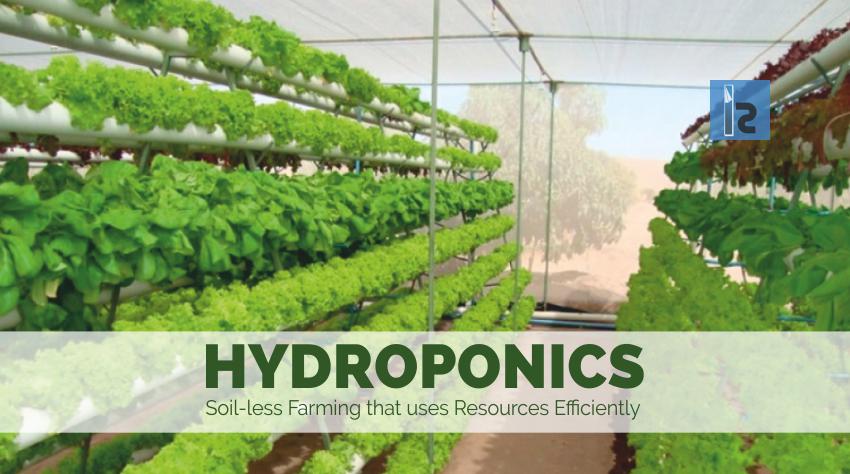Farming World today is looking for ways that would be high on yield and low on everything else. Combining technology, science, traditional concepts and developing solutions that would fit the need of today is what it is aiming at. There are many points that will be considered for new technology to be the latest trend in farming. One such trending farming technique is Hydroponics.
Hydroponics is becoming popular and is often referred to as soil-less farming. This technique uses only water and mineral-solution dissolved in water to grow plants in minimum space. This makes it very suitable for; home gardening, terrace farming and large farms. The hydroponics nutrients used in this technique can come from specially formulated chemical fertilisers, the by-product from fish waste or duck manure among others.
Research – Past and Present
The earliest documented work on growing terrestrial plants without soil dates back to 1627 in a book by Francis Bacon. Later, works of scholars like John Woodward, Julius Sachs and William Gericke among others, laid the foundations for the modern version of hydroponics.
The earliest known success of hydroponics occurred in the Pacific Ocean, where a rocky Island, being used as a refuelling stop for an airline. The technique was used to grow vegetables for the passengers and it was a solution to the absence of soil on the island and high cost of loading fresh vegetables in the flight. In recent years, NASA too has done extensive hydroponic research for its Controlled Ecological Life Support System (CELSS). It believes that hydroponics will create advances within space travel, as a bio-regenerative life support system.
The Basic Hydroponic System
A hydroponic farming system, the latest trend in agriculture, basically involves a growing tray, growing medium, a reservoir and a pump. These components put together to create a hydroponics system where plants can grow without soil. The basic working is as follows:
- Plants are potted in a growing tray (without soil) which is usually a tube or an open tray with small caskets with abundant holes for roots.
- A growing medium is provided in the growing tray. It can be provided continuously in a flow, or can be flooded at once and then drained, or any other way depending on the user and plant requirement.
- A reservoir supplies the growing tray with the medium at regular intervals determined manually or using a time and the pump. The excess of growing medium is drained out of the tray to the reservoir.
Hydroponics Benefits
The simple implementation and effective results of hydroponics have found it many supporters. Some of its benefits are:
- No requirement of soil which means plants can be grown anytime, anywhere.
- Better use of available space especially small areas.
- Growers or farmers have better control on nutrients, temperature etc.
- Effective use of the precious resource named water, as such plants in the tray use only the minimum amount of water required and moreover the water is re-circulated.
- Effective use of nutrients as growers provides only the required nutrients for a plant.
- No harmful chemicals are used for cultivation resulting in better quality, and healthier plants.
- The labour cost and timing is greatly reduced thus saving on cost.
- Plants grow up to 50% faster than they would in the soil, due to a rich supply of nutrients.
- Plants can be harvested throughout the year as the growth environment is controlled.
But like everything else, hydroponics too has some downsides to it. It is often debated whether or not the products can be certified as organic. The initial expenses to set up the system are often a deterrent for small-time farmers. Since everything is dependent on electricity and electronic parts, a system failure can be very critical and often result in crop failure. Infections, if they occur anyhow, can often spread very quickly damaging a whole lot of plants.
Hydroponics, when implemented correctly and under expert guidance, can solve many problems that the world is facing with respect to agriculture. With changing times, adapting to new ways of farming has become a necessity. Being space-saving properties, efficient usage of water and nutrients, a set-up that can last a long time with a little technical help and caution, hydroponics is slowly making its own case stronger with every successful implementation across the globe.
- Sneha Sinha
Read More: Latest Agro Industry News, Blogs and Article


